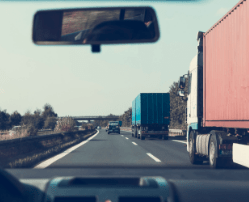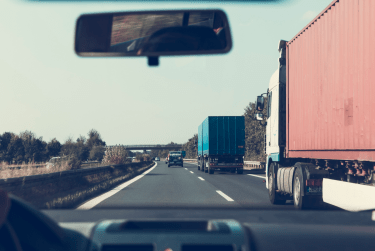Environmental Consequences of Tanker Truck Accidents

How Trucks Can Stay Safer on the Road
Driving a truck is always a little risky. Truck accidents can result in serious injuries and death, no matter what you’re transporting. However, tanker trucks can be especially dangerous. Not only do they carry hazardous cargo, like oil and gasoline, these trucks are also:
- Large, both in size and weight, potentially creating more destruction when involved in an accident.
- Top heavy, which increases the risk of the truck flipping over when taking a sharp turn or accidentally hitting a curb.
- Bulky, which increases blind spots, making it difficult for drivers to see next to and behind the trailer.
When one of these trucks does get into an accident, there is always concern about the driver and the cargo being transported, but transporting gas and oil creates the added worry of what a spill can do to the environment.
A few ways an oil spill can affect the environment include fires that can spread and cause destruction to forested areas, as well as leaks and spills that can seep into nearby water supplies, release toxic gases into the air, and coat nearby wildlife.
Because getting into an accident driving a tanker is increased, and the consequences of the accident can be so dire, it is especially important for operators to know exactly how to keep themselves and their cargo safe on the road.
Plan Your Route Carefully
Every trucker takes the time to plan a route to their destination. It involves looking at designated freight routes throughout the United States and choosing one that will get you to your destination efficiently.
As a tank driver, you should consider the route that will get you to your destination the quickest, but that’s not the only thing you should consider. Even if it takes you a bit longer to get there, it’s much better to choose a safe, steady, uncongested route.
It is also important to consider what you’re comfortable with. For example, if you’re worried about driving on the interstate when passing through a major city, consider taking a less traveled highway around the city center instead.
Only Drive When You Feel Awake and Alert
Reaching your destination by your deadline is important, but it’s not as important as your life or the potential of losing your cargo. If you’re feeling tired, it is always much better to pull over and rest.
Driving when you have been awake for 18 hours is the same as driving with a blood alcohol content of .05. Even if you have been awake for less time, but you have been driving for many hours in a row, you can find yourself making mistakes that you wouldn’t normally make.
It’s a good idea to stop and take a break every few hours on the road. If you find that it’s difficult to keep your eyes open, if you’re staring off into space instead of focusing on the road, or if you can’t seem to stop yawning, it’s important to pull over and take a nap before you continue driving.
Avoid Traffic at Peak Times
Many tank drivers have to drive long distances, and you’re likely to drive on interstates, highways, and busy city roads. Some of these routes can’t be avoided. If you have to drive on a main road and you’re worried about it, at least choose a time to drive on that road during a less busy time.
Stop and go traffic creates a lot of stress, and all that stress can make you a bad driver. Not to mention, the tempers of other drivers are high, which makes it more likely that you could get into an accident.
If you’re approaching a busy interstate or downtown area during rush hour, pull over and get back behind the wheel later in the evening or early in the morning before the sun comes up. If there’s road construction, rest up and drive overnight to avoid traffic. You’ll feel a lot more relaxed and you’ll increase your chances of keeping your cargo safe.
Maintain a Buffer Zone Around Your Truck
Getting stuck behind a truck can be frustrating for drivers and passengers in smaller vehicles. Trucks accelerate slower, but it’s also true that you have to follow slightly different rules when driving a tanker. Smaller vehicles may be able to zip in and out of traffic while tailgating those in front of them, but that’s definitely not something you should do as a trucker.
When driving below 40 mph, you should leave at least one second of stopping distance for every 10 feet of vehicle you’re driving. If you’re driving over 40 mph, you should double it. Even if it means you have to slow down and make other drivers mad in order to maintain your distance, it’s the right thing to do to keep yourself safe and your cargo safe.
Check Out Delivery Spots on Foot
You aren’t the first person to make a delivery to your destination, and you won’t be the last. However, if you have never been there before, you can quickly find yourself in trouble. If you’re delivering oil or gas, spots at gas stations can be especially tight. Although it can be a little comical to see delivery vans get stuck, it’s definitely not an experience you want to have if you’re driving a tanker.
Avoid potential problems by parking your truck somewhere safe and out of the way. Then, check out your delivery spot on foot. See where you can park your truck, the best way to pull in, and the easiest way to orient the truck to pull out to experience a lot less stress while making your delivery.
There can be some serious environmental consequences when a tanker truck gets into an accident. An accident can have disastrous consequences for the driver’s health and well-being as well. You can keep the environment safe, yourself safe, and the recipient of the contents of your truck happy when you follow these tips while behind the wheel.



